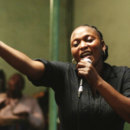auprès de mon arbre
Although this reading of “À une passante” is extremely well known, many readers are less familiar with the way Benjamin develops this separation of eros and sexus throughout “Convolute J” of The Arcades Project and in “Central Park.”, For a lucid and illuminating discussion of allegory in Baudelaire and Benjamin that does focus on “Central Park,” see Kevin Newmark’s recent essay, “Who Needs Poetry? He writes, for example, “when yawning, the human being himself opens like an abyss. Purchase this issue for $26.00 USD. Parisian scenes are embedded—or embossed—into the very scaffolding of the theological drama that is played out in the poem. Because the reader cannot read the poem, the poem reads the reader and thereby sends his own evil image back to him. 39 Downloads; Abstract. This fundamental abhorrence of pregnancy is expressed very well in a passage from the early novella La Fanfarlo, where Baudelaire describes how his idealistic romantic alter-ego Samuel Cramer (for whom love is primarily an intellectual aesthetic experience) “considered reproduction as a sin of love and pregnancy as a spider’s affliction. More specifically, in the very thesis that Hamacher reads so rigorously, he cites the passage in which (but never actually discusses why) Benjamin (following the language of Stendhal and Baudelaire) invokes happiness as the promise of (sexual) happiness in the phrase “women who could have given themselves to us” (38). Here, it is important to underscore that Baudelaire’s impotence, his perversions, his fetishism, his misogyny, his hatred of childbirth, and his celebration of sexual cruelty would hold no interest—either for Benjamin or for me—had they not profoundly altered and transformed, in ways that resist easy description, the very foundations of poetic language and the very experience of what constitutes poetic beauty. She is the author of Dead Time: Temporal Disorders in the Wake of Modernity (Baudelaire and Flaubert) (Stanford University Press, 2002), The Mother in the Age of Mechanical Reproduction: Psychoanalysis, Photography, Deconstruction (Fordham University Press, 2012), and coeditor of Time for Baudelaire (Poetry, Theory, History) for Yale French Studies (Spring 2014). The inescapable convergence of evil and pain in Les Fleurs du mal opens up onto the field of sexuality. In the “Idéal” poems, by contrast, Baudelaire appears to hold up an idealized idea of “beauty” (often represented through figures that point directly to poetry and/or to other arts such as painting or music) that either promises or is shown to appear to promise the possibility of a redemptive spiritual alternative to and/or consolation for the debased material experience of spleen. And the eyes that are “pure mirrors” that gave form and shape to the world in “Beauty” show up as the ersatz river that is a “poor and sad mirror” for Andromache’s tears in “The Swan” (Oeuvres 1:85; Flowers 173). boundary 2 O Muse de mon cœur, amante des palais , Auras-tu, quand Janvier lâchera ses Borées, Durant les noirs ennuis des neigeuses soirées, Un tison pour chauffer tes deux pieds violets? Huysmans at first modelled himself upon Baudelaire. magnitude of the journals program within the Press is unique among American Like bile, it is unmetabolized and unmetabolizable material. Il a écrit quelque part: les anges sont hermaphrodites et stériles” (Oeuvres 1:577)]. However, it is also important to recognize that even in its most theologically charged usages, there is no evil for Baudelaire that is not also an experience of bodily pain and psychic suffering. One should also keep in mind that whether or not Baudelaire actually hated women in real life (and one could even make a case to support the idea that he didn’t actually do so nearly as much as he proclaims—although I’m not sure this matters one way or another), it is important to acknowledge that misogyny operates like a structural necessity and a theoretical axiom that undergirds the very poetic principles of Les Fleurs du mal.8 More specifically, misogyny is the affective means by which Baudelaire immunizes himself and his poetry from anything remotely related to sexual reproduction. in the broad and interdisciplinary area of "theory and history of cultural production," For terms and use, please refer to our Terms and Conditions Most readers understand the yawn on the basis of the poem’s final stanza. A lover of Gallic Byronism, and high-priest of the Satanic school, … Dans le pain et le vin destinés à sa bouche Ils mêlent de la cendre avec d'impurs crachats; Avec hypocrisie ils jettent ce qu'il touche, Et s'accusent d'avoir mis leurs pieds dans ses pas. Les Editions Baudelaire mettent en avant de nouveaux talents ! In The Painter of Modern Life, notably, Baudelaire is fond of citing (albeit slightly misquoted) Stendhal’s dictum that “le Beau n’est que la promesse du bonheur” (Oeuvres 2:686) [“the Beautiful is only the promise of happiness”]. Je suis le sinistre miroir Où la mégère se regarde. The point of the poem, however, is that evil is evil precisely because it destroys anything like a human face. Go to Table As the more traditional, redemptive reading would have it, Baudelaire’s flowers arise from evil but transcend, transform, or escape the material conditions out of which they have been made. […] Diese Holzschnitte sind hervorragende Beweisstücke für die inneren Absichten des Autors. More important, however, for Baudelaire birth is an endless process, the source of an open wound from which evils spring forth throughout life and even into death. Following Benjamin, the essay argues that Baudelaire appeals to beauty to undo the damage done by the so-called natural order, to bear witness to the world that is left out of familiar cycles of production and reproduction, and to remake the world by other means. So even though she presents herself as a source of eternal light and an immutable ideal, the poem very subtly presents a darker side to this appearance. In what follows, in lieu of a detailed reading of the entire poem, I will indicate briefly how one might read “Beauty” against the grain. All rights reserved. Peter Stallybrass and Allon White have argued that “the body cannot be thought separately from the social formation, symbolic topography and the constitution of the subject. Pour la séance 1 : questions sur le poème de Baudelaire. Translations of Baudelaire’s poems are based on James McGowan’s published translation in The Flowers of Evil. Aus: Le Spleen de Paris (Petits Poèmes en Prose) Je voyageais. Here it may come as a surprise that despite the colossal amount of attention that has been paid to Benjamin’s late writings and despite the pervasive (albeit occasionally reductive) influence that his readings of Baudelaire have had on the poet’s reception over the last fifty years, Benjamin’s final—and arguably most sustained—engagements with Baudelaire, in the unfinished fragment “Central Park” and in the behemoth section of The Arcades Project devoted to Baudelaire, “Convolute J,” have remained relatively untouched. Because it comes from the body and keeps one bound to a body that is always a body in pain, spleen is intimately related to sin and failed spirituality as well as to a full range of unsatisfied bodily wants, needs, vulnerabilities, and desires. Correction des questions. Charles Baudelaire is one of the poets that tremendously alimented this conviction. Although this need not be the case (there are, after all, powerful readings of Baudelaire that can be located in both domains), in general terms, the very gesture of choosing between spleen and idéal, as it were, often accompanies and produces reading practices that reinforce tired moralisms and worn-out homilies and neutralize the very aspects of Baudelaire’s poetry that are the most forceful, the most inimitable, the most enduring, and the most subversive. He turns to beauty to undo the damage done by the so-called natural order, to bear witness to the world that is left out of familiar cycles of production and reproduction, and to remake the world by other means. Among all the vices, this one is “even uglier, meaner, and more foul.” With a yawn, this, the most disgusting sin (the word immonde means disgusting, vile, abject, monstrous), would swallow up the entire world (monde). According to this reading, the flowers do not merely come from evil but are produced by evil, composed of evil, and reproduce evil by dispersing it everywhere through perfumed scents and disseminating pollen. ©2019 Duke University Press. “Spleen” poems are characterized by the expression of a form of pain, solitude, and melancholy that manifests as an inability to live in time or with others in a social world. Like a dominatrix, Beauty makes punishing demands and keeps her poet lovers coming back for more. Moreover, and more radically, for Baudelaire, the experience of love (and the word “love” here deserves to be accompanied by as many scare quotes as one can muster) is inextricable from the desire to inflict pain. It causes pain and is caused by pain. But the real issue here is not the sex in itself, but rather the poetic work that the bad sex performs. Tout est là: c’est l’unique question. Moreover, Culler’s reading of the figure of the Devil in “Au Lecteur” is surprisingly reliant on traditional paradigms. ‘Badness’? His Le Drageoir aux Epices is a continuation of Petits Poèmes en Prose. The poem is presented as Beauty’s direct response to the implied but mute and unvoiced human question “what is beauty?” that presumably stirs the inhuman figure into speech. does also publish two journals of advanced mathematics and a few publications Here, it is worth recalling that in his personal diaries, Baudelaire himself compares art to prostitution: “what is art? The Baudelairean allegory—unlike the Baroque allegory—bears traces of the rage needed to break into this world, to lay waste to its harmonious structures (174). Pour ne pas sentir l’horrible fardeau du Temps qui brise vos épaules et vous penche vers la terre, il faut vous enivrer sans trêve. One can read the title in at least two very different ways. How does the “bad sex” in the poem affect our understanding of what Baudelaire is doing with or to the ideal concept of Beauty that the poem also presents? . For example, in “Central Park,” he writes: “The motif of androgyny, the lesbian, the unfruitful woman, should be treated in connection with the destructive power of the allegorical intention.—The rejection of the ‘natural’ must be dealt with earlier—in connection with the city as the poet’s subject” (165). Je suis le soufflet et la joue! In the last stanza, Beauty explains that she fascinates her lovers with her “wide eyes,” which are “pure mirrors” that make everything more beautiful. But if one reads the yawn in this way, it is still a figure that is readable. Translated (liberally!) doi: https://doi.org/10.1215/10407391-3522733. In addressing mortals as mortals, she recalls mortals to their miserable, mortal life, and, in so doing, she causes the very pain that only devotion to her can cure. The poem does not merely eroticize Beauty, then; it depicts her as a promiscuous practitioner of bad—even painful—sex. Let us now turn to the poem called “Beauty.”. In the poem’s famous final two lines, the narrative voice of the poem abruptly discards the collective “we” and splits into two grammatical positions. L’Hyperbole et l’apostrophe: Baudelaire and the Theory of the Lyric. 139 talking about this. This reading is corroborated when one reads “Beauty” together with the poem that is presented as its inverted mirror image, “Hymn to Beauty” (Oeuvres 1:24–25; Flowers 45). He wrote somewhere: ‘angels are hermaphroditic and sterile’” [“il considérait la reproduction comme un vice de l’amour, la grossesse comme une maladie d’araignée. Moreover, the final specular scene of fraternal, narcissistic self-recognition actually participates in the very manifestation of evil that it purports to denounce because it provides the narcissistic gratification of a self-image—even if that image is an ugly one—and, in so doing, both gratifies the desire for self-representation (which is not the same thing as self-knowledge) and diverts the reader’s attention away from inscriptions of other, more horrifying, and more primal figurations of evil and pain at work in the poem. Request Permissions. The figure of the mother occupies a special and very complicated place in Baudelaire’s biography, his theology, and his poetics.9 For over a hundred and fifty years, critics have produced a whole host of persuasive biographical and/or theological explanations to account for Baudelaire’s obsession with original sin and his rejection of all sexual relations that could potentially culminate in childbirth. Far from the unique classical ideal, true beauty is to be found in variety and ‘l’étonnement’, and ‘Le Beau est toujours bizarre.’ (II: 578, emphasis in the original). differences 1 May 2016; 27 (1): 1–24. This image of apocalyptic destruction recalls the primal chaos, the primal mythical yawn through which the world was born. It takes up two of Baudelaire’s most famous poems (“To the Reader” and “Beauty”) in light of Walter Benjamin’s insight that the significance of Baudelaire’s poetry is linked to the way sexuality becomes severed from normal and normative forms of love. See Culler, “Apostrophe” and “L’Hyperbole”; and Johnson, “Apostrophe” for their complementary accounts of how the “fundamental gesture” of apostrophe is to “make something that cannot normally be addressed into an addressee” (Culler, “L’Hyperbole” 87). Curiously, however, Culler does not seem to be aware that Benjamin wrote extensively about the importance of the Devil in Baudelaire. He writes, “There was a realist Baudelaire, a decadent Baudelaire, a symbolist, a satanic, a catholic, an atheist, a classical, a modern, a reactionary, a revolutionary, a saint, and now, today, a postmodern Baudelaire and who knows what next?” (9, my translation). A mouth that cannot receive food becomes a gaping void, an abyss, a yawning chasm that swallows the world. Die Unterkunft bietet Zugang zu einem Balkon, kostenfreie Privatparkplätze und kostenfreies WLAN. .] As Benjamin’s comment indicates, part of the diabolical irony of the poem lies in the very structure of this impossible address: the poem is addressed to a reader who—for the precise reasons systematically and forensically described in the poem—is ill equipped to read the very poem that is addressed to him. The first line of the poem consists of a litany of “our” sins—“stupidity, error, sin, and stinginess”—followed by a scathing enumeration of “our” moral weakness, bad faith, and pathetic attempts at repentance. Select a purchase I would like to suggest, however, that this final scene of self-recognition is still far too comforting, as it gives a face—however evil—to the horrific figuration of evil invoked by the poem. The creaky and somewhat cumbersome theological framework is like a skeleton or a scaffold onto which Baudelaire has superimposed depictions of pain in modern urban life in Paris. All of the famous motifs that Benjamin discovers in Baudelaire’s poetry (ranging from the shock experience, the distinction between Erlebnis and Erfahrung, the decline of the aura, and the importance of the crowd) are derived from the way Baudelaire translates and transforms his disconsolate rage and unsatisfying sexuality into his poetry. Baudelaire transferred to the prestigious Lycée Louis-le-Grand on the family's return to Paris in 1836. The masochistic interspecies love that she inspires in poets renders them mute and compels them to line up at her hard breast where, one by one, they get bruised and beaten by her. Authors; Authors and affiliations; Vaheed Ramazani; Chapter. In the first case, our insatiable hunger for sin causes us to feed our remorse. ‘Melancholy’ (spleen)? Traditionally, radiology physicians were the primary practitioners of diagnostic ultrasound, but with the recognition of its importance in intensive care medicine, critical care physicians have also adopted this practice. In all of his commentaries on what he calls Baudelaire’s “deviant eroticism,” Benjamin suggests that Baudelaire’s sexual perversions drive him away from all conventional poetic forms and themes and impel him to seek alternative modes of poetic expression. Despite his pursuit of perfection in form, his influence has been too often baneful to impressionable artists in embryo. In “Beauty,” the entire poem issues from the voice of a cruel and inhuman feminine allegorical figure: Beauty. In Baudelaire devant l’innombrable, Antoine Compagnon enumerates some of the competing (and often incompatible) clichés and myths according to which Baudelaire’s poems have been received and classified by literary history. From the perspective of the poem’s plot, this trip to hell follows a standard clichéd story line borrowed from popular Christianity. b) Complétez cette courte biographie de l’auteur : Baudelaire est né en 1821 et mort en 1867 à Paris. Read your article online and download the PDF from your email or your account. According to this reading, beauty instills a love in the poet that inspires him to assume the arduous task of presenting this unpresentable ideal through sensuous figures and sonorous language. Cuisiner le pain pita minceur c'est bon et facile avec la recette I Love my Diet Coach, le premier et le seul Coaching Minceur remboursé par les Mutuelles ! And the most diabolical figure of all is that of a cosmological mother who draws all of the creatures of the earth back into nonbeing. Although the link between love, pain, and sexuality is palpable throughout Les Fleurs du mal, the baldest formulation of this link is located in this oft-quoted passage from the personal diaries: “Moi je dis: la volupté unique et suprême de l’amour gît dans la certitude de faire le mal.—Et l’homme et la femme savent de naissance que dans le mal se trouve toute volupté” (Oeuvres 1:652) [“For my part, I say: the sole and the supreme pleasure in love lies in the absolute knowledge of doing evil (de faire le mal). ‘Now’: Walter Benjamin and Historical Time. The dissolution of semblance (die Scheinlosigkeit) and the decay of the aura are identical phenomena. See what Kaphie74 (k_baudel) has discovered on Pinterest, the world's biggest collection of ideas. Mother Tongues: Sexuality, Trials, Motherhood, Translation, Dead Time: Temporal Disorders in the Wake of Modernity (Baudelaire and Flaubert). But Les Fleurs du Mal can just as easily be read as “flowers made of evil,” or evil flowers. However, because these poems are situated on opposite poles of Baudelaire’s cosmology (“To the Reader” falls under the sign of Spleen and “Beauty” appears to be the very matrix for the Idéal), they do not share the same poetic lexicon and hence are rarely read in relation to each other. JSTOR is part of ITHAKA, a not-for-profit organization helping the academic community use digital technologies to preserve the scholarly record and to advance research and teaching in sustainable ways. Dans le pain et le vin destinés à sa bouche Ils mêlent de la cendre avec d'impurs crachats; Avec hypocrisie ils jettent ce qu'il touche, Et s'accusent d'avoir mis leurs pieds dans ses pas. I have chosen to read them together here—precisely on account of their differences—in order to suggest that Baudelaire’s idealized depiction of beauty is affected by and is in some way a reaction to the very conditions of Spleen that are laid down in “To the Reader.”. The recognition that Baudelaire’s aesthetics are founded upon bad sex (rather than something like good eros or the eros of the good) could challenge some of Nehamas’s larger claims about eros and modern aesthetics. Given the difficulty in knowing how to approach these texts (even by Benjamin’s standards, they are cryptic and opaque), it is perhaps not surprising that they have generated very little critical commentary.6 In contrast to the seemingly endless proliferation of critical responses generated by two other late unpublished texts from the same period, “The Theses on the Philosophy of History” and “Convolute N” of The Arcades Project, Benjamin’s late writings on Baudelaire have, thus far at least, with very few exceptions, generally failed to attract the attention of his most discerning philosophically inclined readers.7 Coincidentally, perhaps, in “Central Park” and “Convolute J,” Benjamin identifies male impotence—along with lesbianism, prostitution, fetishism, and hatred of pregnancy—as the determining impetus behind Baudelaire’s anachronistic and innovative use of allegory and his poetics more generally. For Baudelaire, spleen is always accompanied by pain that is simultaneously psychic, spiritual, and bodily. and is known in general as a publisher willing to take chances with nontraditional La diane chantait dans les cours des casernes, Et le vent du matin soufflait sur les lanternes. So poets work for Beauty because they need Beauty to work for them. Thus, the sinner does not occupy the city, but rather is occupied by it: the inhuman activity of the crowd is depicted like a race of devils that populate the mind like teeming worms. “To the Reader” is perversely and provocatively addressed to modern readers, for whom, as Benjamin famously put it, “the reading of lyric poetry would present difficulties” as “[w]illpower and the ability to concentrate are not their strong points” (“On Some Motifs” 313). As the ultimate evil, this yawn reverses all of history and refuses all birth, all figuration. More specifically, Culler makes no mention of the fact that the Devil is depicted as an explicitly maternal figure in this poem. The more we feed our remorse, the more we are eaten by evil, the more corrupt we become. “Beauty” is the name for the place where all of these images are mass produced. The poem posits a world in which the only two figures that presumably could provide healthy nourishment—God and the mother—are strikingly absent. Charles Pierre Baudelaire (UK: / ˈ b oʊ d ə l ɛər /, US: / ˌ b oʊ d (ə) ˈ l ɛər /; French: [ʃaʁl bodlɛʁ] (); 9 April 1821 – 31 August 1867) was a French poet who also produced notable work as an essayist, art critic, and one of the first translators of Edgar Allan Poe. This item is part of a JSTOR Collection. One offers: Entombment! In recent years, it has developed its strongest reputation The essential link between the sinful knowledge of causing pain that comes “from birth” and the evil expression of that knowledge in what Baudelaire here calls volupté—but that I am calling “bad sex”—is crucial for understanding the basic building blocks out of which his poetics are constructed. In Baudelaire, when sexual relations involve two living humans (which they certainly do not always do, for sex in Baudelaire can involve interspecies love, love of dead things, and love of inhuman forms, like the crowd, which is animated without being alive), the sexual encounter is most often, if not always, associated with pain. « Es hat ziemlich lange gedauert, bis Frans Masereel sich an den großen Einzelholzschnitt gewagt hat. And man and woman know from birth that all voluptuousness is to be found in evil”]. Expand your Outlook. The descent into hell is nothing other than a return to business as usual in everyday life. For the purposes of this discussion, however, it is important to note that birth and evil are almost like inverted mirror images of one another, or two names for the same thing. It is a mark of fatigue, indifference, hypocrisy, and insensitivity to the suffering of others. The poem compares this spiritual hunger to the way beggars—that is, starving people, people who are too poor to feed themselves—become fodder for the parasites that feed on them. For the purposes of this discussion, and for reasons that I hope will emerge as I proceed, I am choosing to place my attempt to read the relation between flowers and evil implied in the title Les Fleurs du mal under the aegis of a more general problem specific to Baudelaire’s poetics that I am calling “bad sex.”4 In order to understand what bad sex means in Baudelaire and for Baudelaire, it is important to underscore that the English title Flowers of Evil does not begin to convey the complexities of the French title Les Fleurs du mal. Search for other works by this author on: Visions of Excess: Selected Writings, 1927–1939, Baudelaire in 1859: A Study of Poetic Creativity, The Pursuit of Signs: Semiotics, Literature, Deconstruction. For example, in an unpublished poem that was written as a possible epilogue to the 1861 edition of Les Fleurs du mal, after having condemned the city of Paris along with all its inhabitants, Baudelaire appeals to angels to bear witness to the spiritual righteousness of his poetic labor with these words: “Car j’ai de chaque chose extrait la quintessence, / Tu m’as donné ta boue et j’en ai fait de l’or” (Oeuvres 1:192) [“For I extracted the quintessence from every thing / You gave me your crap and I turned it into gold”].
Rayon 10 Km Paris, Grands Photographes Américains Contemporains, Spot Photo Loiret, Geo Bolivia Municipios, Citation Coiffure Coco Chanel, Travailler Chez Mac Cosmetics Belgique, Le Mans Orly Train,
















